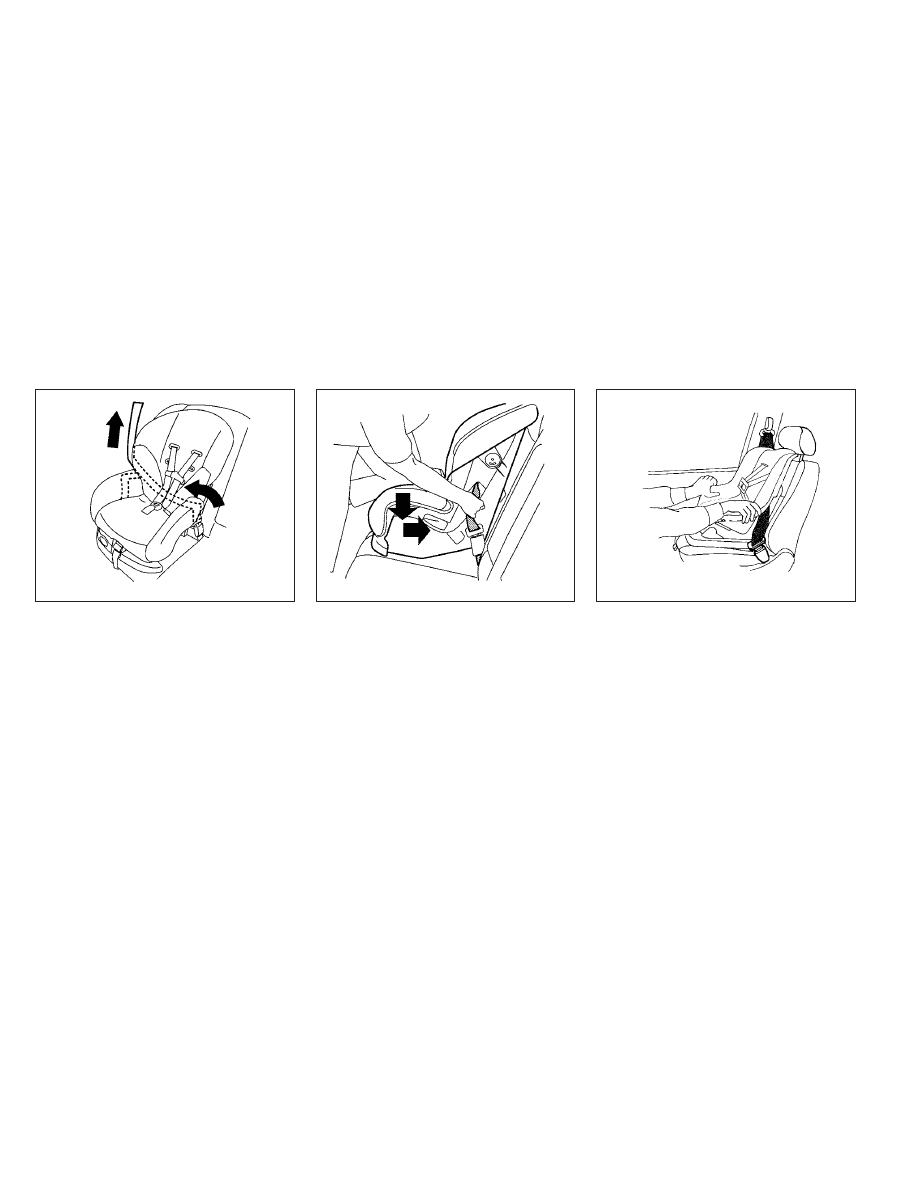Nissan Kicks (2022 year). Manual in english - page 4

5. Allow the seat belt to retract. Pull up on
the shoulder belt to remove any slack in
the belt.
6. Remove any additional slack from the
seat belt; press downward and rear-
ward firmly in the center of the child re-
straint with your knee to compress the
vehicle seat cushion and seatback while
pulling up on the seat belt.
7. Tighten the tether strap according to the
manufacturer's instructions to remove
any slack.
8. After attaching the child restraint, test it
before you place the child in it. Push it
from side to side while holding the child
restraint near the seat belt path. The
child restraint should not move more
than 1 inch (25 mm), from side to side. Try
to tug it forward and check to see if the
belt holds the restraint in place. If the
restraint is not secure, tighten the seat
belt as necessary, or put the restraint in
another seat and test it again. You may
need to try a different child restraint. Not
all child restraints fit in all types of
vehicles.
LRS0668
Forward-facing – step 5
WRS0681
Forward-facing – step 6
WRS0698
Forward-facing – step 8
Safety-Seats, seat belts and supplemental restraint system
1-37